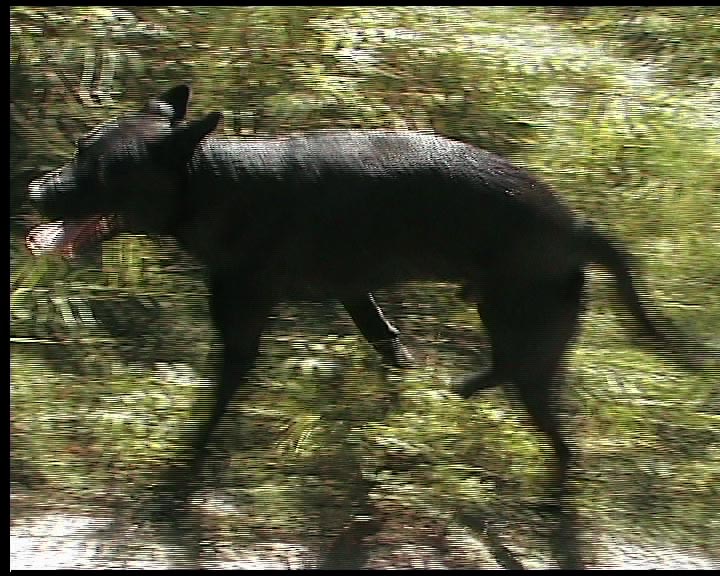Entropies numériques
It’s difficult to give a simple definition about the concept of entropy. This concept comes from the second law of thermodynamics, and it is described by a physical equation that only physicists can understand. This second law seems in opposition with the first one, but, in fact, they are complementary. The first law could be resumed in a simple way: « The change in the internal energy of a closed thermodynamic system is equal to the sum of the amount of heat energy supplied to the system and the work done on the system ». The second law says, in short, that it’s easier to lose than to get energy. Robert Smithson explains this idea with an example: a child running clockwise, between a white and black sandpit, mixes the sand. If the child decides to run in the other way, the sand doesn’t come back to the original position, but becomes more and more mixed. He says that the only way to make the sand coming back to the first position is with a movie showed backwards. But also the movie is subject to entropy, so, after some time, it couldn’t be seen anymore. The numerical word is subject to entropy too, but it’s difficult to be aware of it. We know that every time we copy an image, we lost some information from it, and, after a lot of copies, it becomes illegible. I try with this video to show at the same time this problem and Smithson’s ideas about entropy.

Authors:
- Julio Velasco
Born in Bogotá, Colombia, he lives and works in Paris and Berlin. He was linked, for several years, to the Arts and Sciences department of the Sorbonne University, headed by Olga Kisselelva, and actually he’s associated to the European Studies Institute and the Labtop of the University Paris 8, where he does a comparative research, directed by Alain Quemin, on the art districts in Paris, Berlin and London. His work focuses on the relations between art, society and bio-art (he published recently an article about this topic on the periodical [plastik]) using medias as video, QR codes, but also plants, trees, water, etc.
read more
His experimental videos test, at the same time, the borders of this medium and those of Contemporary Art. They were showed several times at “Ars Electronica” in Austria, “Instants Vidéo”, “Vidéoformes” or “WHOOPEE festival” in France, “Colgne OFF” in Germany, “International Image festival” in Colombia, “Paseo Projet” in Spain, “LC Gallery”, “Michel Journiac” and “59 Rivoli” in Paris, but also in Brussels, Utrecht, Palermo and Rome.


